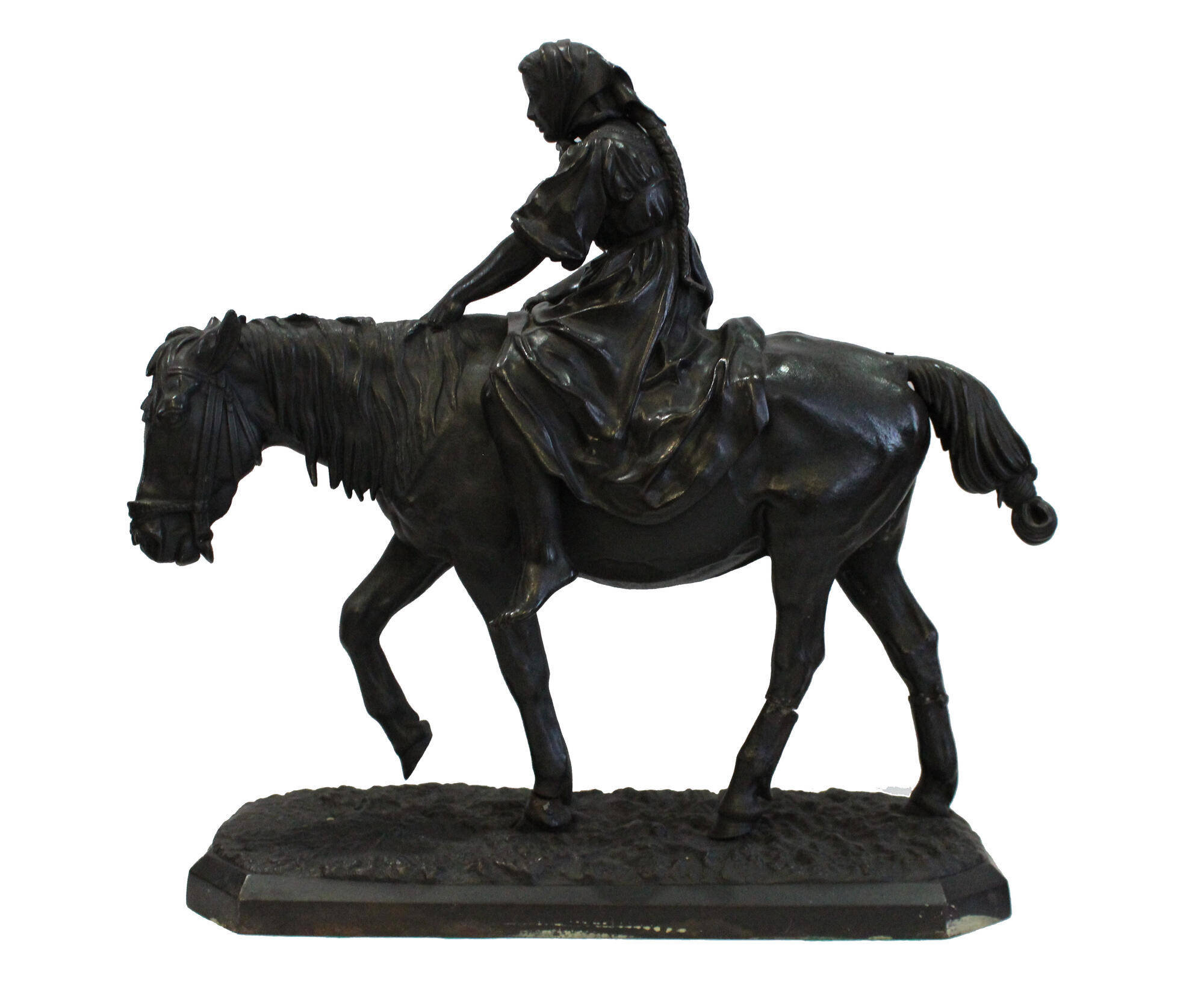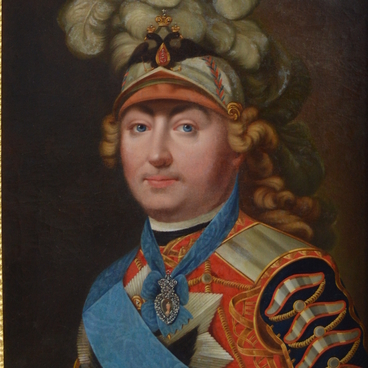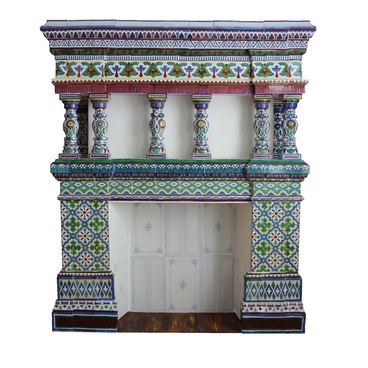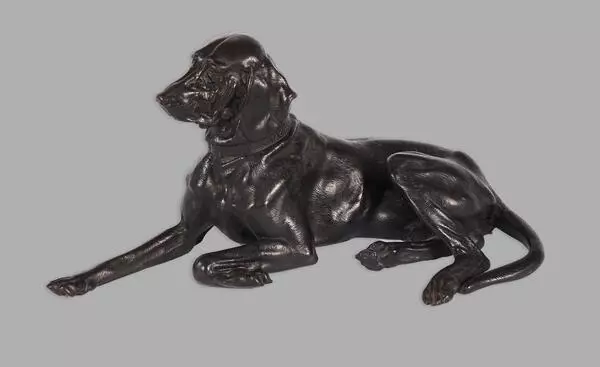The sculpture ‘Peasant Woman on Horseback’ depicts a day-to-day scene, a young woman returning from work in the fields. She is wearing plain clothes, a shirt with a deep cut-out and wide sleeves that are rolled up to her elbows. On top of that, she has a sarafAn dress with thin straps and a belt around her waist. On her head is a headscarf, and a long braid of hair falls down her back. The head is lowered somewhat, and her posture suggests she is tired after a long day of work.
The sculpture was cast at the Kasli casthouse. Kasli casting is a folk craft that specialized in the casting of a broad range of art pieces from iron. This art form got its name from the location of the casting shop in the town of Kasli in the Chelyabinsk Region. Art pieces made by Kasli masters were in great demand in the market, allowing the shop to turn a good profit. They ultimately proved to be a lot more popular than pieces made by some more famous sculptors, on account that the latter usually cost a lot more money.
The popularity and affordability of these folk masters worried the owners of the facility so once all the self-taught masters in Kasey were banned from making cast sculptures based on their own sketches on pain of dismissal. Their request that they be allowed to get a professional degree in art and send their children to art school was also denied. They were required to only do their job, which was to cast, mint, and perfect copies of beautiful sculptures created by others.
The Peasant Woman on Horseback is attached to a base that serves as the ground. The left corner of the base has an inscription that reads ‘Lieberich.’ On the inside of the base, there are labels of the Kasli workshop: two labels shaped like round medals (the left one carries the profile of the Emperor and the inscription ‘B.M. Alexader II Emperor Samod. Vsled.’ going around it), ‘KAS 3 1887,’ ‘D. Teplyakov, ’ and ‘1870.’
The first cast was created in 1861. The master managed to show the power and femininity of the Russian woman in the sculpture. On the one hand, we are looking at a fragile girl, but on the other, she is also a self-assured woman capable of handling a horse without a saddle or stirrups.
The sculpture was cast at the Kasli casthouse. Kasli casting is a folk craft that specialized in the casting of a broad range of art pieces from iron. This art form got its name from the location of the casting shop in the town of Kasli in the Chelyabinsk Region. Art pieces made by Kasli masters were in great demand in the market, allowing the shop to turn a good profit. They ultimately proved to be a lot more popular than pieces made by some more famous sculptors, on account that the latter usually cost a lot more money.
The popularity and affordability of these folk masters worried the owners of the facility so once all the self-taught masters in Kasey were banned from making cast sculptures based on their own sketches on pain of dismissal. Their request that they be allowed to get a professional degree in art and send their children to art school was also denied. They were required to only do their job, which was to cast, mint, and perfect copies of beautiful sculptures created by others.
The Peasant Woman on Horseback is attached to a base that serves as the ground. The left corner of the base has an inscription that reads ‘Lieberich.’ On the inside of the base, there are labels of the Kasli workshop: two labels shaped like round medals (the left one carries the profile of the Emperor and the inscription ‘B.M. Alexader II Emperor Samod. Vsled.’ going around it), ‘KAS 3 1887,’ ‘D. Teplyakov, ’ and ‘1870.’
The first cast was created in 1861. The master managed to show the power and femininity of the Russian woman in the sculpture. On the one hand, we are looking at a fragile girl, but on the other, she is also a self-assured woman capable of handling a horse without a saddle or stirrups.





